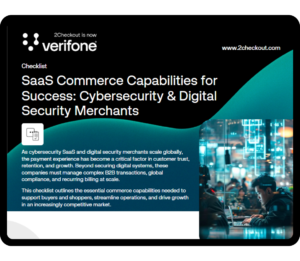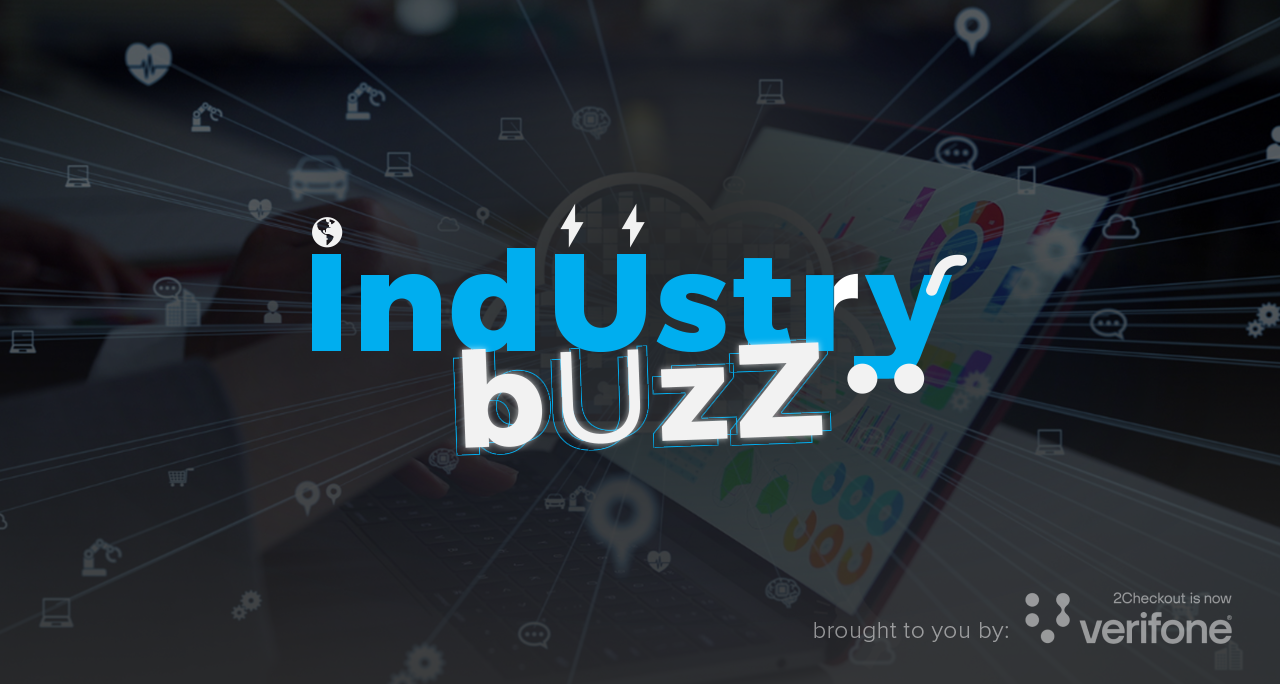By now, every company knows that cybersecurity matters. But in 2025, it’s no longer just about keeping attackers out. It’s about how you deliver your product, how you charge for it, and how you build trust with your customers.
Security threats are more advanced. Regulations are tougher. And users who buy your software expect more flexibility, more control, and fewer hoops to jump through. If your platform is hard to integrate or frustrating to pay for, it doesn’t matter how strong your defenses are. Customers will move on.
That’s why cybersecurity vendors today aren’t just managing risk. They’re also managing experience.
In this article, we’ll break down:
- The most important cybersecurity market stats to know in 2025.
- What’s changing in how SaaS and PaaS tools are delivered and sold.
- Why payments, billing, and compliance are now part of the product.
Let’s take a closer look at where the market is heading and what it means for your SaaS business.

What the Cybersecurity Market Looks Like in 2025
The cybersecurity industry in 2025 is experiencing significant growth.
This momentum is not just a response to increasing threats, but also a reflection of how businesses now view cybersecurity as a core part of their operations and customer experience.
The end-user spending on cybersecurity is expected to grow to $212 billion in 2025. This is a 15.1% increase from the year before.
This rise is mainly due to the growing number and complexity of cyber attacks, which are pushing businesses to invest more in security tools.
The most significant increases are happening across three areas:
- Security software is projected to grow by 1%, reaching $100.7 billion in 2025,
- Security services, including managed services and consulting, are set to grow by 6%, hitting $86.1 billion,
- Network security is expected to increase by 1%, reaching $24.8 billion.
Global Growth is Accelerating
North America and Western Europe remain the largest cybersecurity markets, however, regions such as Asia-Pacific, Latin America, and the Middle East are expanding at a faster pace.
For example, Japan’s cybersecurity market is forecasted to grow at 16.9%, doubling by over 100%, from $8.3 billion in 2024 to $17.7 billion in 2028. This is driven by increased digital infrastructure and cloud adoption.
Countries including Brazil, India, and the UAE are also increasing their investments, with a strong focus on flexible, cloud-based security platforms.
Many of these markets are being built with modern architecture from the beginning. Without legacy systems in the way, they are turning to SaaS and PaaS security tools that are easy to deploy and scale.
Industry Spending Patterns are Shifting
Industries like finance, healthcare, and telecom continue to lead in overall cybersecurity budgets. Faced with growing threats and tighter regulations, they’re also some of the first to embrace SaaS and PaaS cybersecurity solutions.
In fact, recent data shows that organizations are embracing cloud-delivered cybersecurity where agility, flexibility, and growth are top of mind.
For instance, with a projected CAGR of 15.31%, the healthcare sector is the fastest-growing vertical in the cloud security space. It has, after all, seen a significant surge in cyberattacks, with 92% of organizations targeted in the past year, up from 88% in 2023.
In addition, healthcare organizations are increasingly reliant on telehealth and IoMT platforms, which makes security not just a requirement, but a priority. Patient data needs to be protected. Compliance needs to be met. And traditional, static models aren’t built for that level of complexity.
PwC’s 2025 Global Digital Trust Insights report shows that many companies are boosting their cybersecurity budgets, with a strong focus on data protection and cloud security.
The goal: to strengthen resilience and build trust with customers and stakeholders.

Cloud-Native Tools and SOC Automation Are On the Rise
Traditional tools aren’t keeping up with how fast teams are deploying apps, scaling infrastructure, or responding to threats. Cloud-native security gives them the flexibility to adapt in real time, without being locked into fixed architectures.
But flexibility alone isn’t enough. Security teams are also turning to automation to help manage growing workloads.
According to the 2025 State of the SOC Report, AI-powered automation is becoming a core part of Security Operations Center workflows. It’s helping teams filter alerts, prioritize threats, and act faster, especially in environments where human capacity is limited.
Threats Are More Complex, Zero Trust Architecture Gains Traction
Security teams are responding to more frequent and more damaging attacks. The average cost of a data breach is now 4.8 million dollars.
Insider-related incidents are costing companies an average of 17.4 million dollars per year, whether they’re caused by negligence or internal abuse.
Consequently, the Zero Trust security model is on the rise, with a growing number of organizations moving away from traditional defenses. By 2025, 60% of companies are expected to have Zero Trust policies in place, making it a major part of their security strategy.
Delivery Models are Changing
Cybersecurity is no longer sold only through traditional licenses. Buyers are asking for usage-based pricing, tiered subscriptions, and managed services that match their actual needs.
Modern buyers are also looking for:
- Pricing that adjusts with usage
- Local currencies and billing options
- Easy integration through APIs
These expectations are shaping how vendors bring products to market. A strong product alone is not enough. Companies now expect flexible billing, seamless onboarding, and global compliance to be part of the full security offering.
What This Data Means for Cybersecurity SaaS and PaaS Providers
For cybersecurity providers, the shift in spending is only part of the story. The real challenge is how buyers want to engage with products; how they choose, implement, and pay for them.
First off, buyers want more control. They expect API-first architecture, modular features, and pricing that scales with usage. Security leaders are looking for tools that integrate seamlessly into complex environments, not platforms that require lengthy deployments and rigid contracts. And as the market matures, this level of flexibility is no longer a nice-to-have, but a baseline requirement.
On the other hand, providers are already adapting. As mentioned earlier, many are rolling out usage-based billing models and hybrid pricing structures that blend freemium access, add-ons, and enterprise tiers.
They are also separating onboarding by customer segment, offering self-serve experiences for SMBs and high-touch support for larger buyers. These changes reflect what customers actually need: a faster path to value and a buying journey that fits their size and scale.
Looking ahead, cybersecurity vendors will need to build and price with scale in mind. Demand is rising across regions and industries, but so are expectations.
Subscription fatigue is real, and retention now depends as much on billing experience as it does on product performance.
To stay competitive, providers should focus on:
- API-first delivery,
- Localized billing options, and
- Contracts that flex with customer growth.
In short, monetization is now a core part of the product experience, shaping how buyers evaluate and engage with security platforms.

How Payments and Billing Are Changing for Security Vendors
It’s true that cybersecurity vendors are rethinking how they bill and collect payments. Flat-rate subscriptions and manual invoicing are no longer built for scale, especially in global markets.
Buyers want payment systems that are flexible, usage-aware, and easy to manage, whether they’re a startup with five endpoints or an enterprise with thousands of them.
Billing Models Are Getting Smarter
More vendors are shifting toward models that reflect how customers actually use their products.
- Usage-based billing is becoming more common, with charges tied to metrics like scans, endpoints, or API calls. This gives customers better cost control and helps vendors align pricing with delivered value. According to Maxio’s 2025 benchmark report, 67% of SaaS companies now use usage-based pricing, up from 52 percent just two years ago.
- Tiered subscriptions offer different feature sets and usage limits at different price points, allowing buyers to choose what fits them best.
- Volume-based discounts are especially important for enterprise customers, giving them predictable pricing as they grow.
Payments Are Going Beyond Credit Cards
Buyers now expect to pay the way they prefer. In many regions, this means digital wallets, bank transfers, or B2B invoicing. Supporting local payment methods and currencies isn’t just a convenience but rather an important factor in reducing friction during checkout and growing globally.
Bad Billing Experiences Drive Churn
Failed payments remain one of the leading causes of involuntary churn. Vendors that use automated dunning systems, such as smart retry logic and customer reminders, can recover up to 80% of failed transactions.
Subscription Logic Still Gets Overlooked
Features like proration, mid-cycle upgrades, or billing alignment are often missing from vendor systems. But when done right, these details improve transparency and trust. They also prevent billing errors that can lead to cancellations.
What Vendors Need to Know About Compliance and Payments
In the past, security and payment compliance used to live in separate lanes. One covered frameworks like ISO 27001 and SOC 2. The other focused on payments, things like PCI DSS, PSD2, and Strong Customer Authentication (SCA). That separation might have worked then, but not anymore.
In 2025, both are considered baseline. If you’re selling SaaS globally, your billing and security systems need to meet compliance standards by default.
A few major changes are now in effect:
- PCI DSS 4.0 is fully enforced. This latest version of the Payment Card Industry standard requires stricter authentication, better monitoring, and more detailed risk assessments.
- SCA enforcement is ramping up in the EU. Customers in Europe now expect secure authentication for every online payment, and vendors that fall short risk payment declines and customer churn.
- Country-specific data laws are growing. Regions like India, China, and Brazil now enforce rules that require local data storage or processing. This affects not just app architecture, but also how payments are handled and where billing data lives.
What this means for SaaS vendors is simple: your billing infrastructure should come ready to comply. Trying to manage these rules manually or adjust them later is risky, expensive, and unsustainable.
Why Local Payment Options Matter More Than Ever
Expanding into new markets is a significant growth opportunity for SaaS providers. However, many encounter challenges when it comes to monetization.
A key factor is the payment experience: even exceptional products can see drop-offs during trial conversions or at checkout if local payment preferences aren’t accommodated.
Local buyers expect:
- Familiar payment methods: In Brazil, Boleto Bancário is widely used, especially among consumers without credit cards. In Mexico, OXXO allows customers to pay for online purchases in cash at convenience stores. In the Netherlands, iDEAL is the preferred online payment method, facilitating direct transfers from bank accounts.
- Localized checkout experiences: Displaying prices in local currencies and providing checkout flows in the local language can significantly enhance user trust and reduce friction.
The consequences of not offering localized payment options include:
- Increased cart abandonment: Customers are more likely to abandon purchases if their preferred payment methods aren’t available.
- Reduced conversion rates: A lack of local payment options can lead to lower conversion rates, as customers may be hesitant to complete transactions using unfamiliar methods.
To effectively monetize in diverse markets, SaaS providers should:
- Integrate local payment methods: Offering region-specific payment options can cater to local preferences and increase conversion rates.
- Provide multi-currency pricing: Allowing customers to pay in their local currency can reduce confusion and enhance the purchasing experience.
- Ensure localized checkout processes: Tailoring the checkout experience to local languages and cultural expectations can build trust and encourage completion of purchases.
By addressing these aspects, SaaS providers can create a seamless and trustworthy purchasing experience for international customers, hence enhancing their global monetization efforts.
Final Thoughts
Cybersecurity is one of the most dynamic growth areas in SaaS. But success depends on more than strong protection. It depends on how well your product fits into the way people buy, use, and pay for it.
From flexible billing to localized payments and built-in compliance, the path forward is clear. Companies that align their monetization strategy with buyer expectations will grow faster and retain more customers.
Want to see what this looks like in action?
Download the Cybersecurity Commerce Capabilities Checklist to review how your business handles subscriptions, payments, and global scale.






